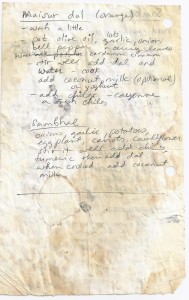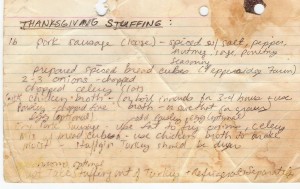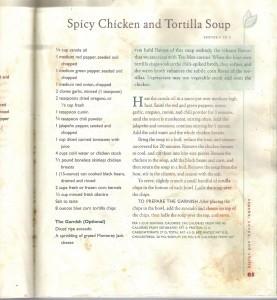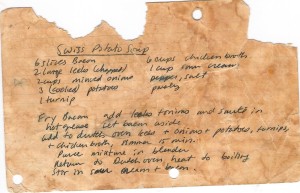I was an avid Girl Scout when I was younger and I used to love to sing the camp songs that went along with scouting. One of the popular tunes was called “Make New Friends.” The lyrics tell you to make new friends, but keep the old because one is silver and the other gold.
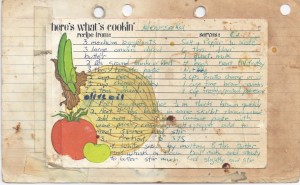
In the last couple weeks, I have had the opportunity to appreciate that refrain. We moved to Alpine almost two years ago now and have begun to make new friends. (It’s always harder when you don’t have kids to break the ice.) Last week we invited some new friends/neighbors, Jacki and Wendell, over for dinner. We met them at our yoga class down the street – our main social outlet. We appreciated them immediately because they loved the outdoors and were always out hiking in the mountains nearby or running on the trails near our neighborhood. To honor the occasion, we broke out one of our oldest recipes ever: Greek Moussaka. We only make this dish about every five to ten years because it is a little labor intensive and wonderfully (devastatingly) rich. When we make it, we make lots of it – several casserole dishes worth. I say “we” because this is a dish that Jay traditionally makes, with me playing sous-chef. Anyway, we were happy we made lots because a week or so after our delightful evening with our new neighbors, one of my oldest friends, Wendela, whom I knew from high school and who was my first college roommate, came to visit. Wendela too, is an outdoor kind of girl. It had been ten years since we’d seen each other. She and I talked and caught up while we climbed Bell Bluff together. It’s a good long hike and we were pooped when we got back home. It was the perfect time to unfreeze some of our leftover Moussaka and enjoy it again with an old friend.
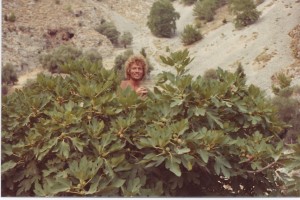 |
| Jay (aka “Adam”) in a fig tree on Crete, 1982 |
I can’t even say the word “Moussaka” without immediately being transported back to the summer of 1982. That’s the summer, a year after I met Jay, that we spent backpacking through Europe. Our travels took us to different countries in Europe from England to Scotland, Wales, France, Italy, Greece, Turkey, Switzerland, Holland, and Germany. In Greece, Jay fell in love with Moussaka and tried it at every restaurant we went to, noting the subtle differences, paying attention to what he liked and didn’t like about various recipes. When we got home, he set out to find a recipe that matched the ones he liked best. The result is the recipe attached here.
While cooking up Moussaka and memories from our backpacking trip through Europe recently, I turned to the journal that I kept on that trip more than 30 years ago. I came upon following entry, written after 3 days on a train from Turkey to Switzerland. My journal says:
Spending many hours on a train leads to much soul-searching and thinking (if there’s anything left unsettled in your mind.) Between reading my new book and watching the beautiful East Italian coastline, I did a lot of thinking about my own future. Which way was right? The unanswerable questions circled my mind and tortured me endlessly. Should I go for Optometry? 6 years of hard study, challenge, a good income, but . . .then what?? Will I be content to look in peoples eye day after day. I kept thinking it’s not fair I can’t do what I want to do: write and teach. Then I started thinking maybe I can, despite the education budget cuts, teacher cutbacks, low pay. Maybe if I went for it and met some of the right people I could become a professor. On and on. Should I do this or this?
Funny how some refrains, like the old Girl Scout song, keep turning up in one’s life! 30 years later, I am still musing about what to do with my life and wondering why I can’t just write and teach! And in the next breath, thinking maybe I can . . .
Backpacking through Europe served as a microcosm for what the next 30 years of my life would be: adventure and travel with my best friend, sprinkled with making new friends, sprinkled with mystical experiences, interspersed with experiencing peaks (profound love) and valleys (fights) with Jay, all recorded in a journal. Even as I wonder what to do with my life, I find have been doing it all along – traveling and writing, appreciating friendships, searching for more, loving and struggling. One of the last entries from my 1982 backpacking through Europe diary says this:
Somehow I had grown accustomed to the haphazard lifestyle we’d been living: being surrounded by castles, ancient monuments, impressive buildings, ruins, endless churches, cobblestone streets, trains, the underground system and people from all walks of the earth speaking foreign languages. We’d been from the charming British countryside to the rugged incredible Swiss Alps, from sun bleaching dark tanning Greek isles to wild wet Holland. All along the way we were continuously amazed at how easily we adapted. At each moment we barely seem fazed to be walking under the Eiffel Tower, climbing the Shilthorn, or exploring old ruins. Throughout it all, we were just ourselves, feeling basic things: I’m tired, let’s eat, where are we sleeping? . . .
Looking back on it all, it seems fantastic — fabulous. But, our adventures were ordinary for where we were at the time. Everything felt natural. Still, it seems obvious once back in America our stories will sound most exciting, and enviable. Our pictures will look so interesting. We will continuously recall the experiences of our summer in Europe. Yet throughout it all, no matter where we were, the times that were best were those when we felt close to each other, had fun with each other regardless of (though taking advantage of) our surroundings.
“No matter where you go, No matter what you do or see or have, what matters most is who you have beside you.”
What I learned so long ago is that friends, old and new, but particularly best friends are so important, for these are people you can be close to and have fun with, regardless of your surroundings, regardless of the peaks and valleys of life.
I offer you our oldest recipe, our Moussaka recipe, which you might note is written in Jay’s handwriting. May it enrich your life, too.
Moussaka
Original Recipe Alternatives
|
3 medium eggplants
|
|
|
3 large onions diced
|
We usually use sweet onions
|
|
Butter
|
|
|
2 lbs ground lamb or beef
|
We usually do half and half; omit to make this vegetarian
|
|
3 Tbs tomato paste
|
|
|
½ cup red wine
|
|
|
½ cup chopped parsley
¼ tsp cinnamon
|
|
|
Salt and pepper to taste
|
|
|
6 Tbs flour
|
We use potato flour
|
|
1 quart milk
|
|
|
4 eggs, beaten until frothy
|
|
|
Nutmeg
|
|
|
2 cups ricotta cheese
|
Cottage cheese can be substituted (but I prefer ricotta)
|
|
1 cup fine bread crumbs
|
We get gluten free bread cubes like for stuffing and then pulse grind them in the blender
|
|
1 cup freshly grated parmesan
|
|
|
Olive oil (lots)
|
|
|
Potatoes – cooked and diced
|
· Preheat oven to 375 degrees
· Peel eggplants and slice ½” thick
· Pour generous olive oil in skillet and brown the eggplant on both sides
· Heat 4 Tbs butter in same skillet and brown onions
· Add meat for 10 minutes
· Combine paste with wine, parsley, cinnamon, salt & pepper, and add to meat
· Simmer and stir
· Prepare white sauce in separate pan by melting 8 Tbs butter and whisking in flour
· Boil milk and add slowly to butter and flour mixture
· Stir constantly
· Cool mixture slightly then add in beaten egg, nutmeg and ricotta cheese
· Add salt & pepper to taste
· Grease a large pan (11 x 16) – or use multiple pans
· Sprinkle bottom with bread crumbs
· In our alternate and preferred version we add a layer of sliced potatoes on top of the bread crumbs
· Arrange alternate layers of eggplant, meat with parmesan
· Add white sauce on top
· Bake for one hour until golden
· This gets better each day!
Like this:
Like Loading...



